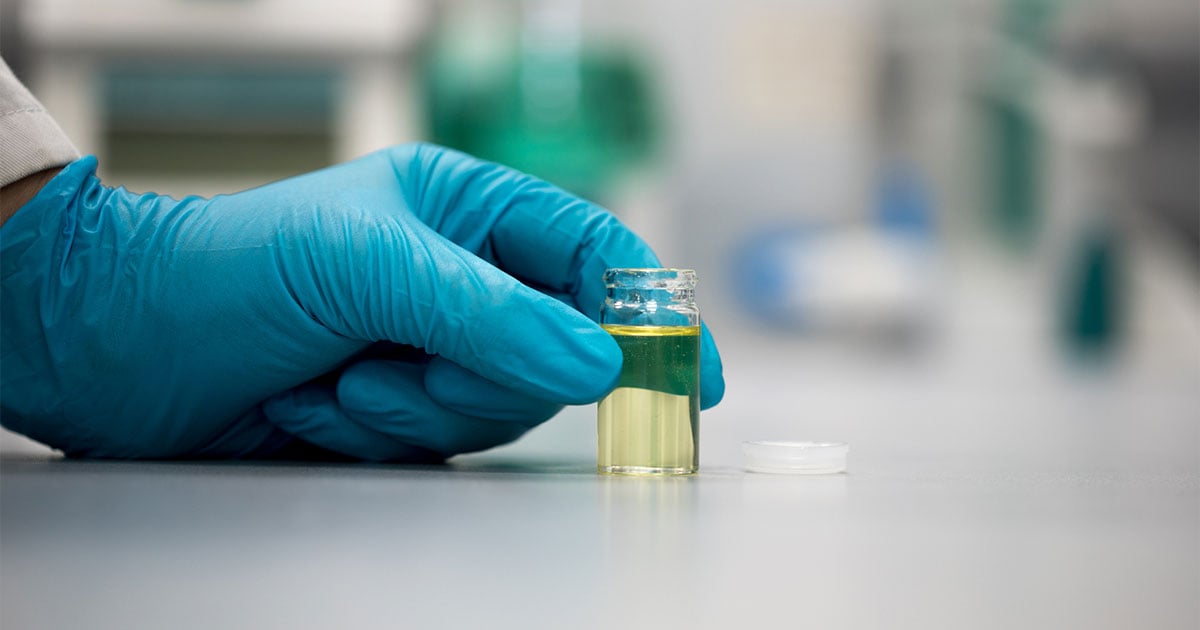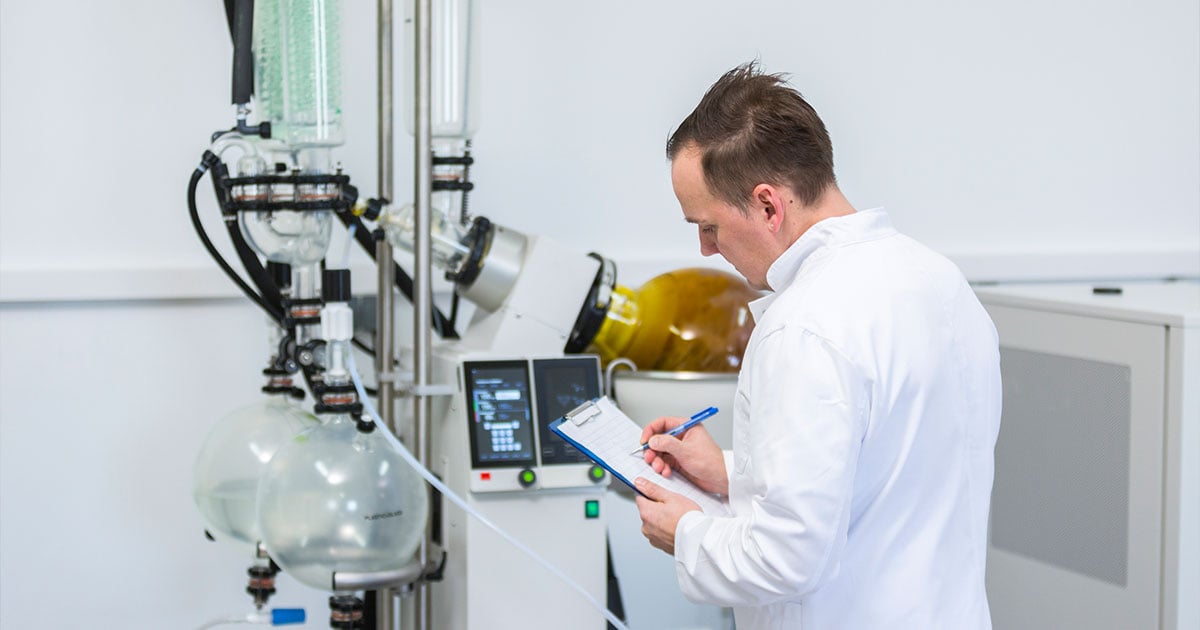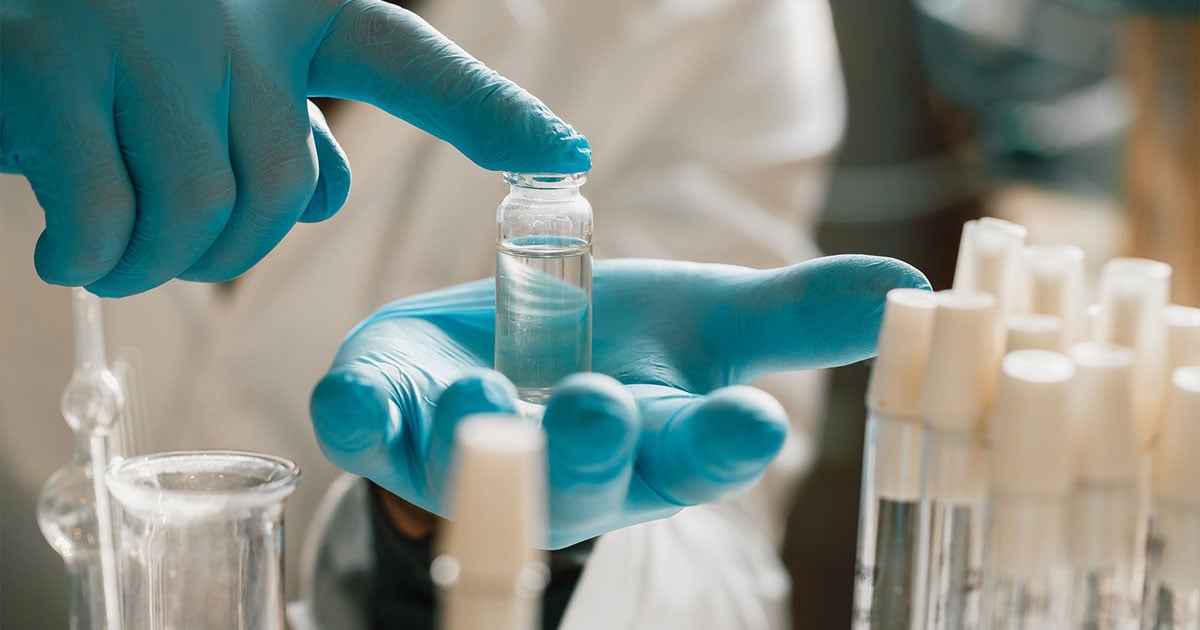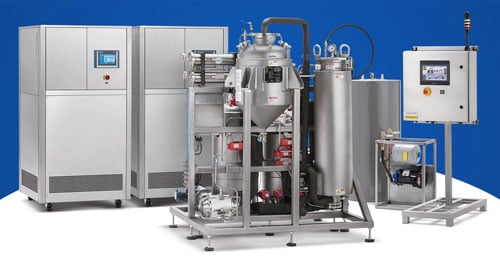
Cannabis consumers are increasingly getting hip to the science and production methods of their favorite products. They are not just looking for the highest THC possible anymore. Cannabidiol (CBD), minor cannabinoids, terpenes, and other components are more in-demand than ever.
In the cannabis supply chain, extraction companies convert raw materials into extracts and infuse them in edibles, tinctures, vape cartridges, topicals, and more.
Ethanol cannabis extraction and other solvent-based and solventless methods give customers a greater product variety. Ethanol is a versatile, safe, and cost-efficient solvent with many benefits for producers and consumers. Here is why ethanol extraction is a great way to go.
What Is Ethanol?
Ethanol, specifically ethyl alcohol, grain alcohol, and EtOH, is a colorless and flammable liquid used for various industrial purposes. It is commonly made from corn grain, but can be made from other sugar- or starch-based feedstocks.
In the U.S., most gasoline contains about 10% ethanol to oxygenate the fuel and lower air pollution. It is a common ingredient in beauty and cosmetic products due to its astringent properties and ability to stabilize the ingredients.
In food additives, ethanol helps evenly distribute food coloring and improves the flavor of food extracts. In household cleaning products, ethanol is used for its disinfecting properties.
In the cannabis industry, high-proof ethanol (190-200) as a solvent allows processors to scale their hemp extractions.
What Is Ethanol Extraction?

Cannabis extraction is the process of converting raw cannabis material (dried or fresh-frozen flower material or trim) into a cannabis extract or extract-infused product. The idea is to isolate the plant’s trichomes, containing cannabinoids and terpenes.
After extraction, processors are left with a cannabis concentrate that can be consumed alone or infused into various products.
Extraction companies can make cannabis edibles, topicals, tinctures, transdermal patches, capsules, and inhalers with cannabis concentrates, which are concentrated forms (available in various consistencies) of the cannabis resin.
Ethanol extraction is one of the most efficient and popular cannabis extraction methods alongside supercritical carbon dioxide (CO2), hydrocarbon, rosin, ice water, and dry-sift extraction methods.
Here is what happens in the ethanol extraction process:
- Ethanol solvent is added to the solvent vessel.
- Chillers and jacketed vessels bring the solvent down to cryogenic temperatures. Manufacturers use warm ethanol in the Soxhlet technique, mainly used in small-batch production.
- Ethanol is introduced into the material vessel to soak the plant material (biomass) and dissolve trichomes.
- Ethanol is separated from crude oil.
- In some cases, winterization may be needed to remove lipids from the extract, but cold ethanol production does not require winterization.
- Ethanol can be removed in a rotary evaporator or falling film evaporator.
- A vacuum oven may be used to remove the rest of the residual solvent.
Cannabis ethanol extraction boasts numerous benefits over other processing methods and can be a complementary workflow to other extraction techniques, such as butane hash oil (BHO) extraction.
Benefits of Ethanol Extraction

Ethanol is a high-quality solvent for botanical extraction. Although there are drawbacks with any extraction method, ethanol has more positive characteristics than negative ones.
History
Ethanol has a long history in botanical extraction. Alcohol was one of the earliest recreational drugs and has remained just as popular thousands of years later.
One of the earliest instances of alcohol consumption dates back 13,000 years, when archaeologists discovered wheat and barley-based alcohol in stone mortars carved on the cave floor in modern-day Israel.
In the early 20th century, apothecaries in the U.S. would sell ethanol-based tinctures made with cannabis until it was prohibited by the federal government. Today, ethanol can be safely and efficiently used for home and commercial cannabis oil production.
Storage
Volatile, flammable, and explosive solvents like hydrocarbons are subject to building and equipment regulations that vary by state. Ethanol tends to have higher storage limits than hydrocarbon solvents, making it more efficient to store in certain cases.
The looser storage requirements for ethanol extractors allow them to handle large volumes of material for greater throughput.
Food Grade
According to the Food and Drug Administration (FDA), ethanol is a Generally Recognized As Safe (GRAS) ingredient in food and beverages. Ethanol is a safe and food-grade solvent used in the pharmaceutical industry. In pharmaceutical manufacturing, 0.5% is a standard limit for class 3 residual solvents, but cannabis processors may even reach below this level.
Safety
Compared to other extraction methods, ethanol is one of the safest. Ethanol is not as inherently explosive as hydrocarbon extraction, although modern automated extraction systems allow manufacturers to safely work with either solvent.
Compared to CO2 extraction, ethanol extraction uses lower operating pressures, making it more affordable to produce at both small-batch or large-scale levels.
Ethanol does not require storage under pressure like CO2. It is also less explosive than butane and can be stored at room temperature and pressure in a non-flammable container or cooler temperatures.
Throughput
Ethanol extraction can be used at any scale but is commonly used for medium capacities due to its high throughput and fast extraction times. For instance, the fully-automated Elara ethanol extraction system can run about 120 pounds of biomass per hour, with less than a 60-second downtime between runs. As cannabis markets expand globally, having a high-volume extractor on your side can help processors keep up with demand.
Time-Saving
With high-performance extraction equipment, ethanol extraction can reduce the requirement for dewaxing or winterization. These filtration methods are used to remove unwanted lipids and waxes during post-processing and can come with higher equipment and labor costs.
Dewaxing and winterization can be used in hydrocarbon extraction to filter unwanted particles, but with some ethanol extraction systems, these steps can be unnecessary. Cryogenic temperatures, however, require more energy for cooling.
Cost-Efficiency
Cryogenic ethanol extraction is a cost-effective solution for many processors. Ethanol extraction equipment has a relatively lower upfront cost compared to CO2 extraction systems. In addition, end-to-end automation can reduce labor and speed up run times. Automation in hemp oil extraction creates a streamlined workflow.
Versatility

As a polar solvent, ethanol is able to bind to water-soluble components and a wide range of components. Although distillation infiltration can create high-quality distillates for broad use, this method can also extract a greater range of components necessary to make full-spectrum hemp extract. Full-spectrum extracts are believed to have greater health benefits.
Ethanol Extraction Disadvantages
Like any other solvent or extraction method, ethanol extraction has some drawbacks, although high-performance systems and complementary extraction methods under one roof can offset or even eliminate these issues.
- Ethanol can dissolve water-soluble compounds such as chlorophyll. These undesirable compounds require additional post-processing to remove this undesirable plant component. Activated carbon can help remove these pigments.
- Ethanol has a relatively higher boiling point than other solvents like propane and butane, which can drag out the recovery process.
- Ethanol is not able to produce terpene-rich extracts.
- Ethanol extraction post-processing can be more time intensive and laborious than hydrocarbon post-processing.
- Food-grade ethanol may be more expensive than other solvents.
- It is not able to extract fresh-frozen cannabis because this starting material can reduce efficiency.
- Ethanol-based extracts can require the addition of terpenes.
Finding a Safe and Pure Ethanol Cannabis Extract
When searching for a suitable cannabis product, the method of extraction is an essential factor to consider. We recommend shopping from cannabis brands that include a certificate of analysis (COA) from an independent lab that has tested the product for potency and contaminants.
Hydrocarbon and Ethanol Extraction Unite
In the competitive extract market, Luna Technologies allows extraction operators to harness the power of end-to-end ethanol and hydrocarbon extraction systems. Create a flavorful, pure, and potent cannabis oil with our fully automated Elara and Oberon extraction systems.


